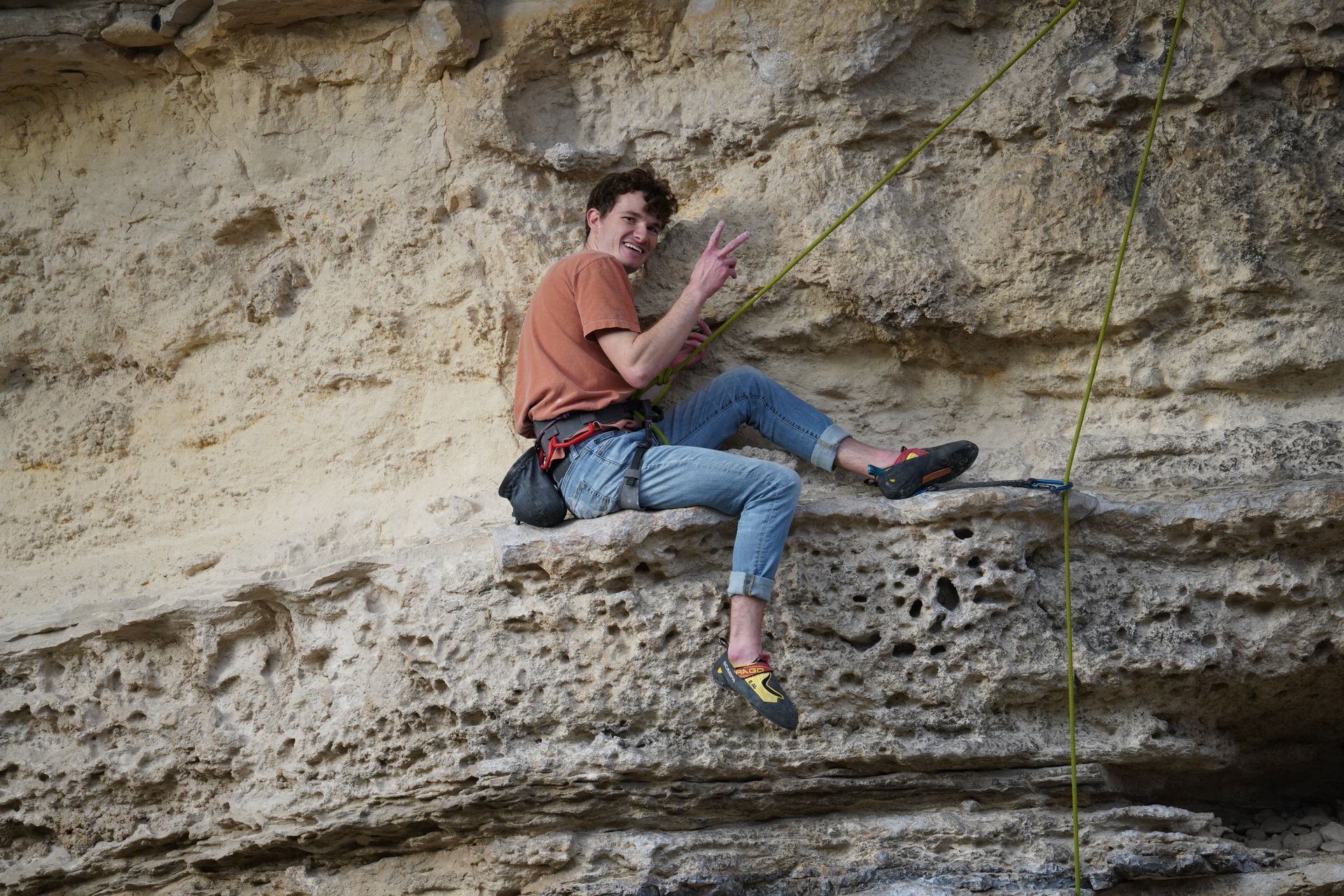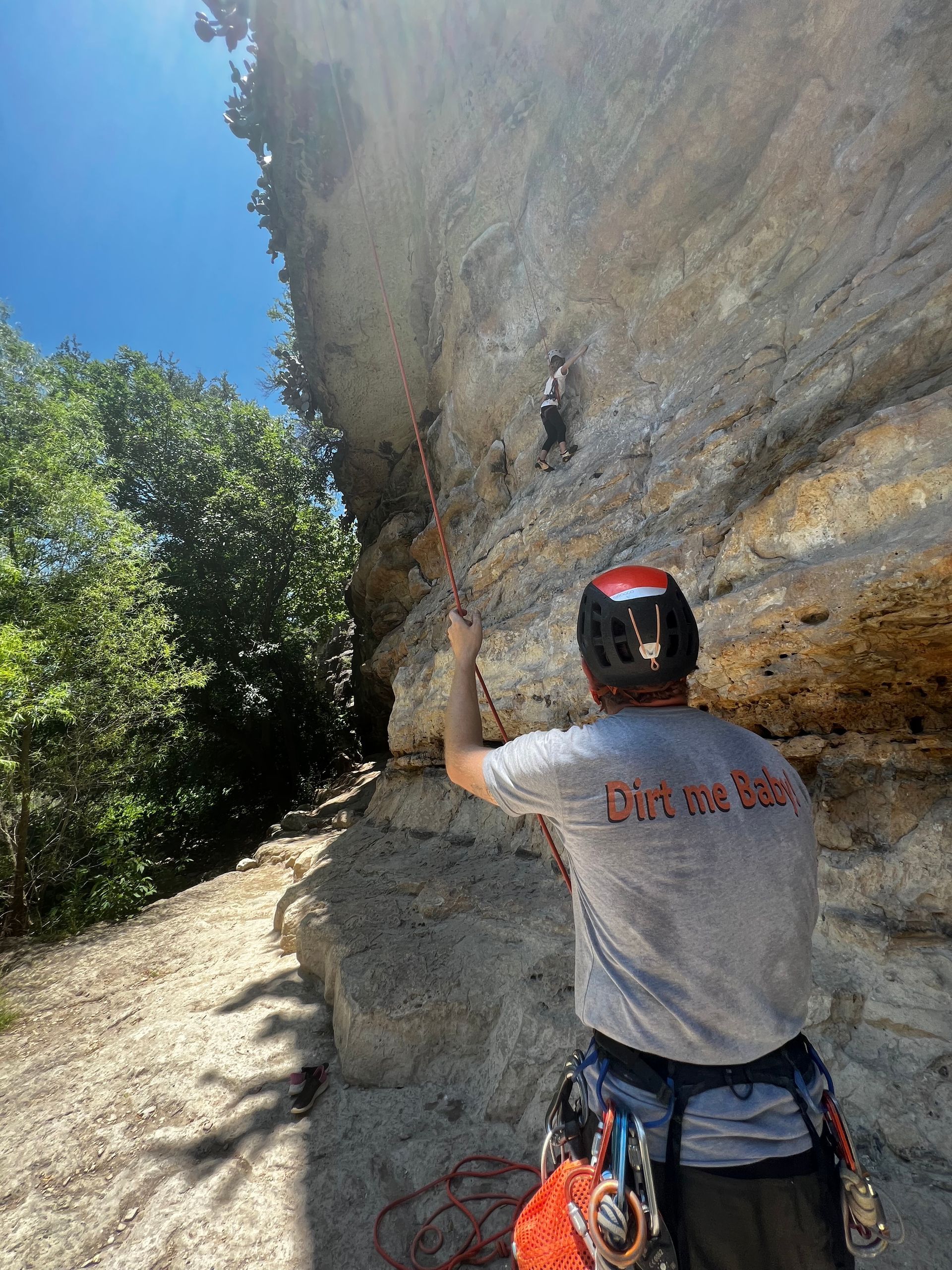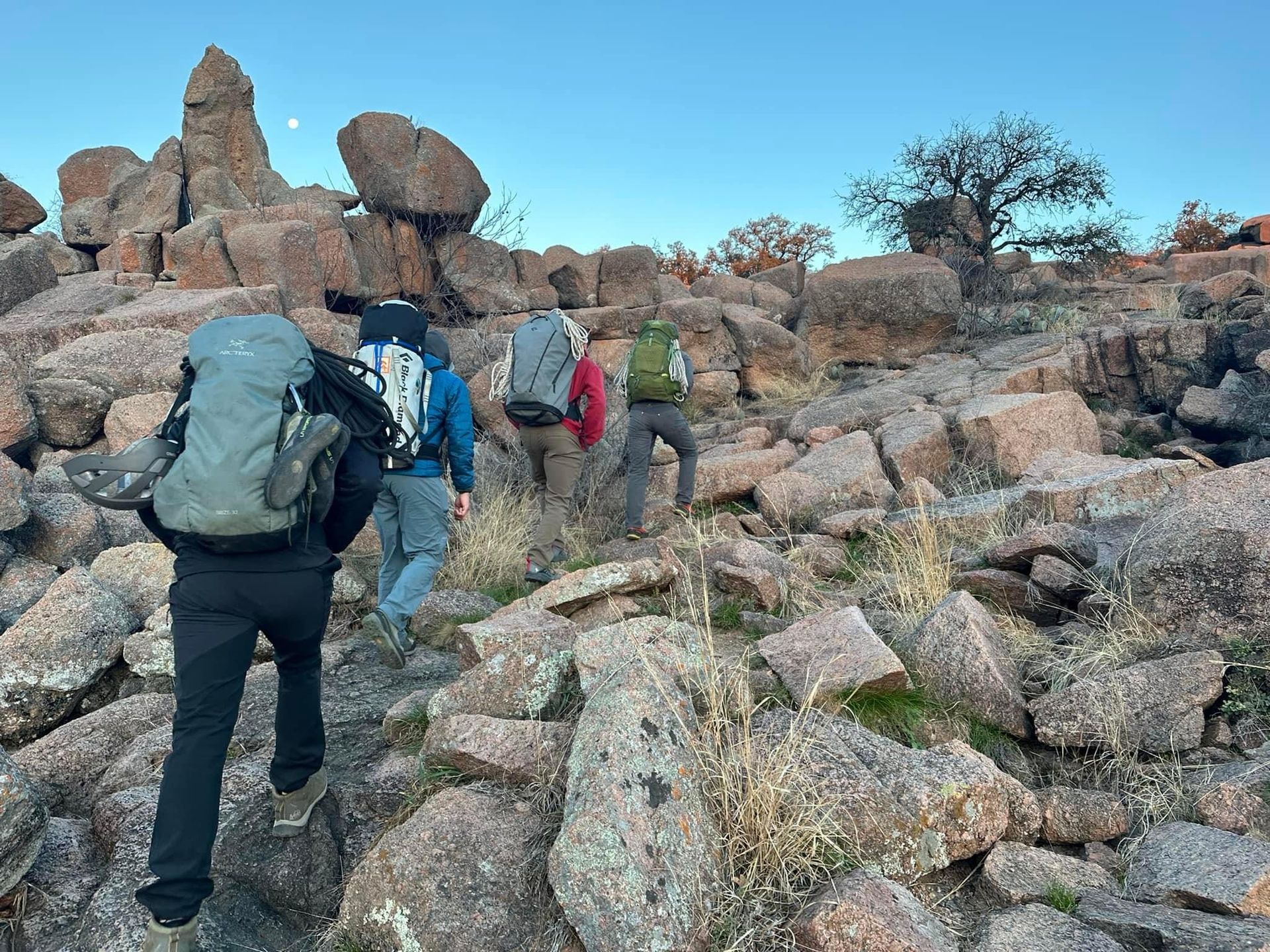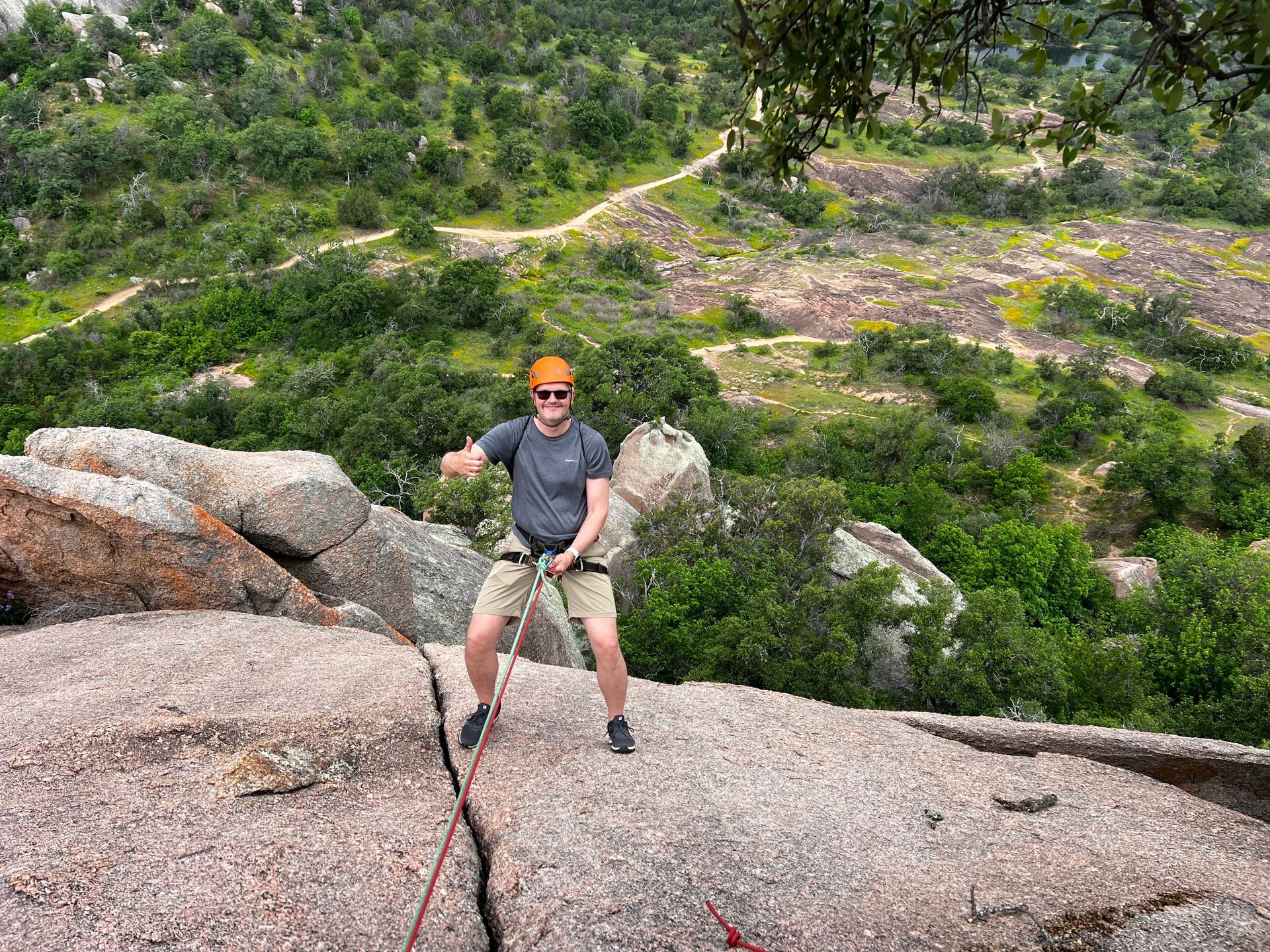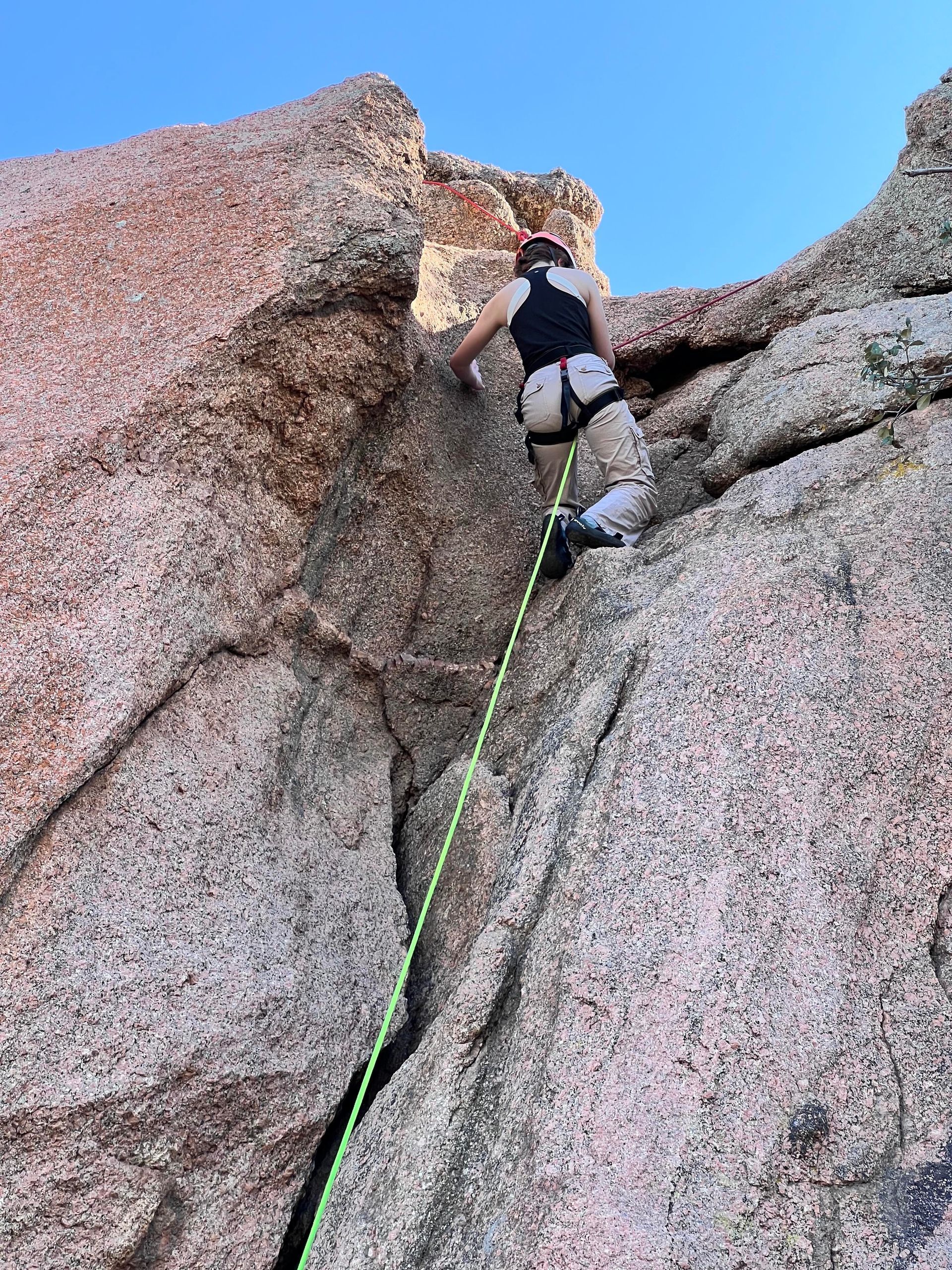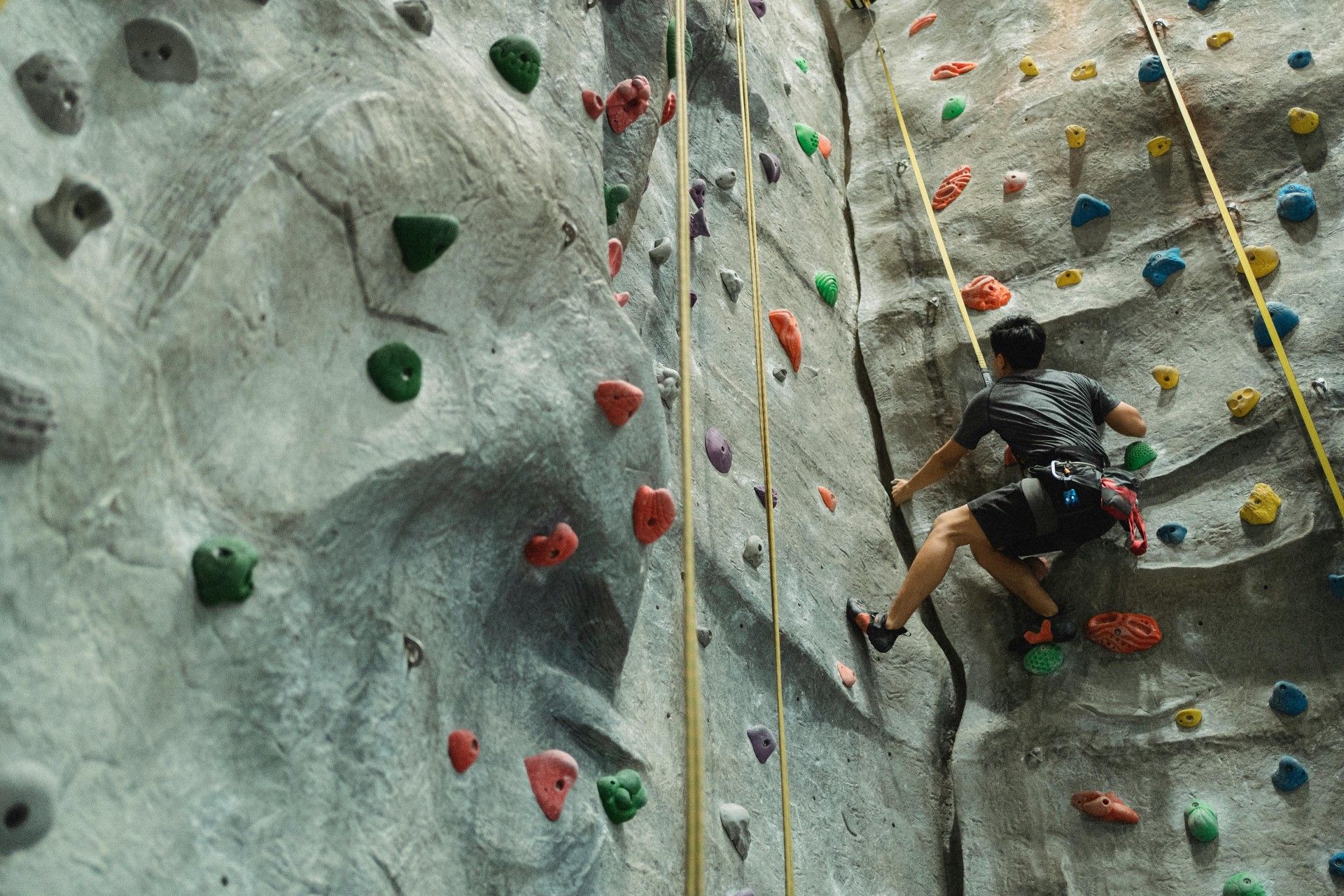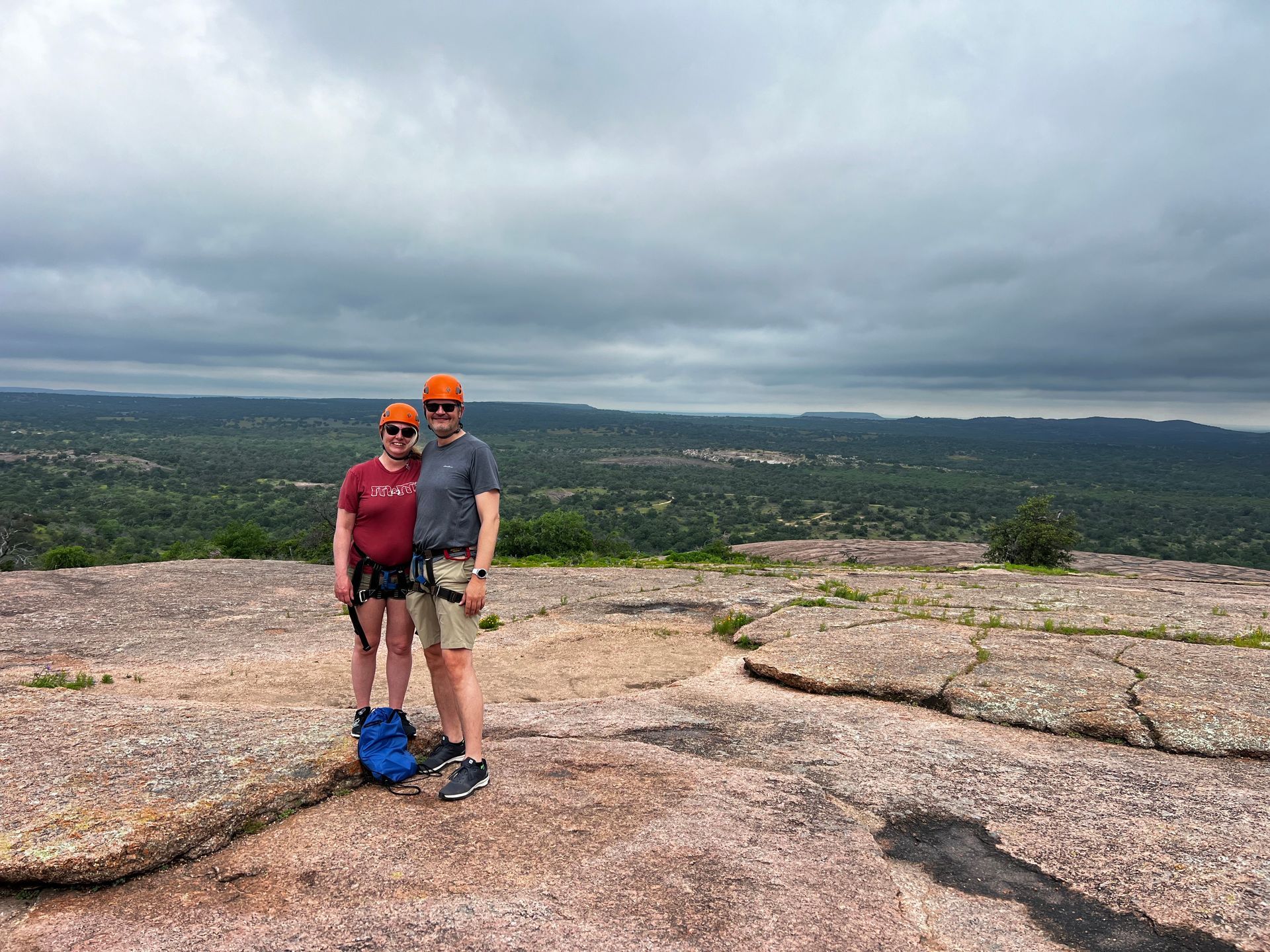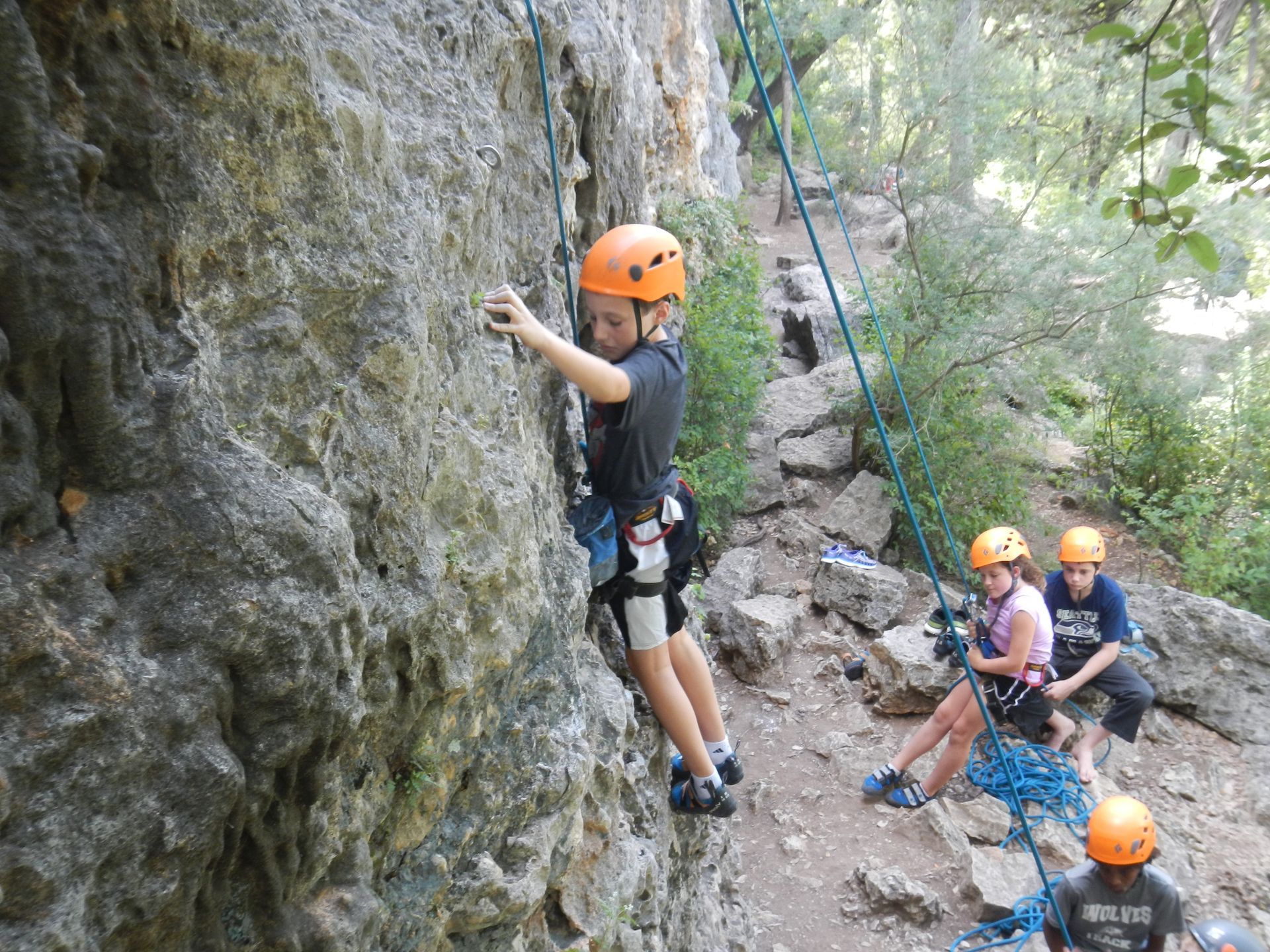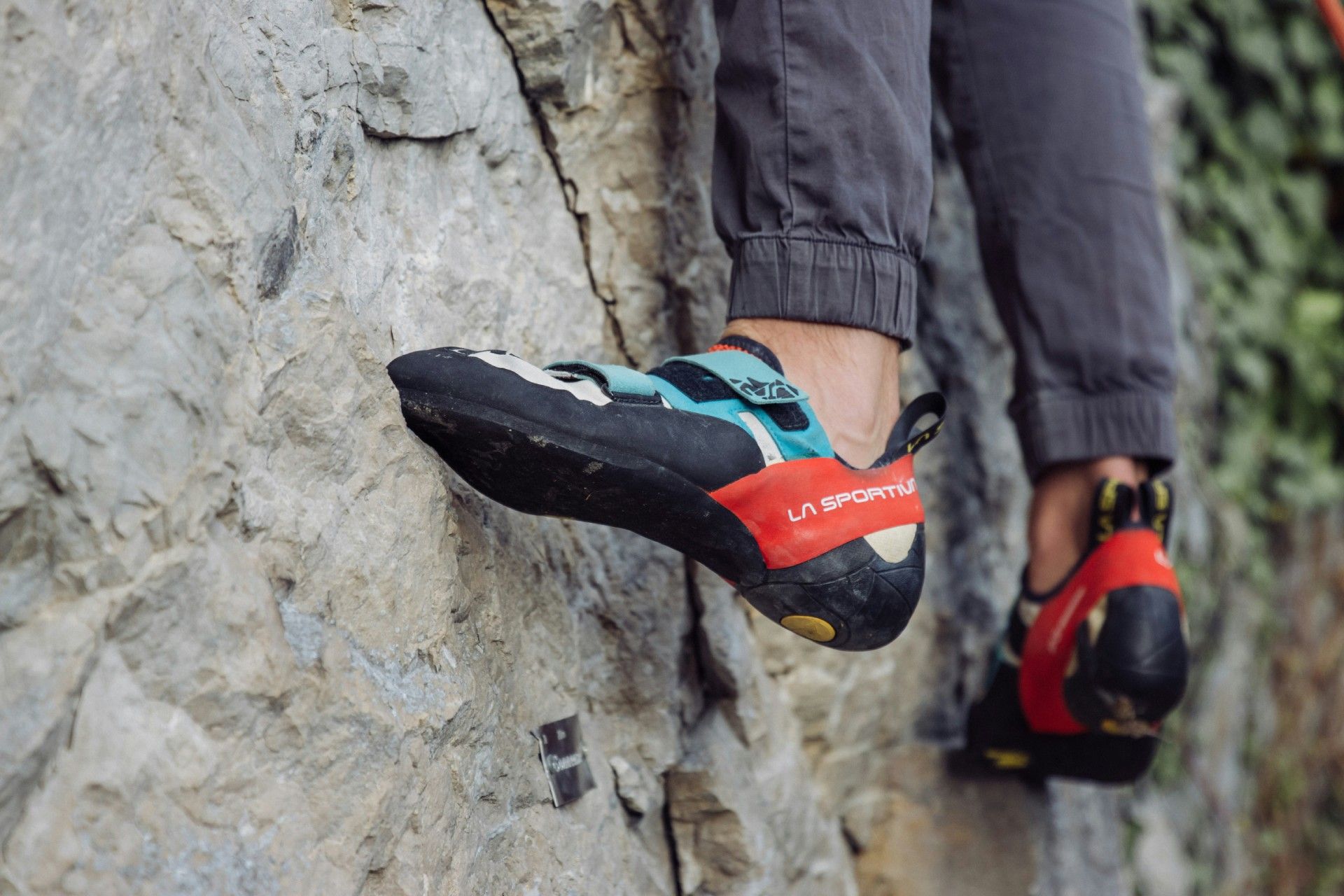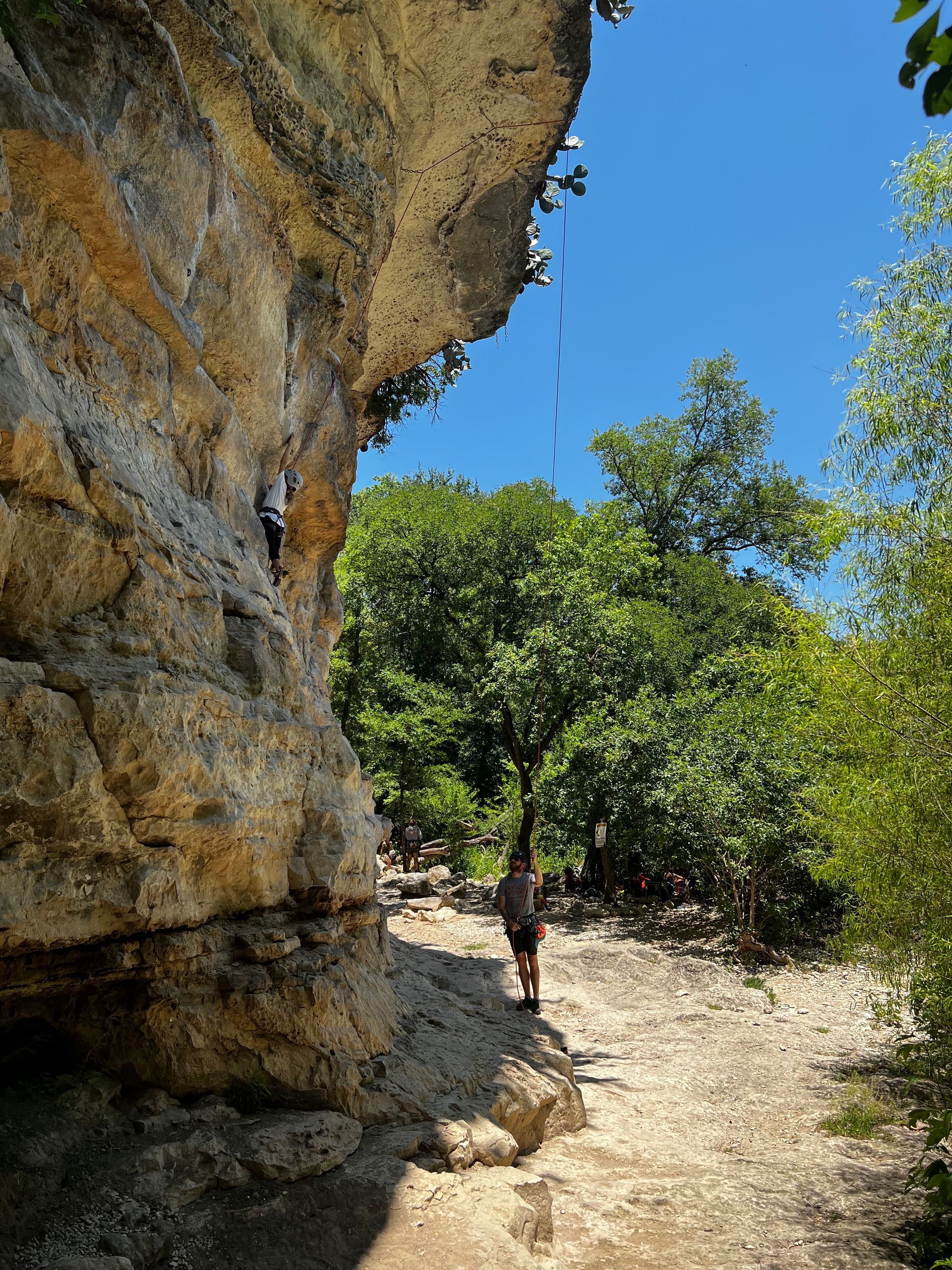14 At-Home Exercises to Train for Outdoor Rock Climbing
You don’t need to be on a wall to become a stronger climber. In fact, some of the best workouts for rock climbers can happen right in your living room, backyard, or garage. Whether you're waiting for the weekend or just trying to stay in shape between climbs, this rock climbing workout routine at home will help you build the strength, balance, and control you need on real rock.
Climbing outdoors isn’t just about upper body power. It’s about body awareness, mental focus, and having the endurance to move with confidence. From the rough limestone of Reimer’s Ranch to the granite domes of Enchanted Rock, outdoor climbing presents unique challenges that you can absolutely train for without leaving your house. A little consistent effort goes a long way.
These moves are great for beginners transitioning from gym climbing to outdoor routes, and they also work for seasoned climbers looking for a solid at home climbing workout to maintain fitness. Whether it’s bad weather, off days, or mid-week stretches when you can’t get to the crag, these rock climbing exercises at home keep you ready.
We kept this list simple. No fancy gym equipment, no long explanations. Just 14 practical moves you can do at home to stay ready for your next send.
Key Takeaways
- A structured rock climbing workout at home helps you maintain grip strength, balance, and endurance even when you can’t make it to the gym or crag.
- Simple bodyweight moves like planks, wall sits, and lunges build climbing-specific strength without requiring expensive equipment.
- Grip-focused exercises such as book pinch walks, wrist rolls, and dead hangs directly improve your outdoor climbing performance.
- Consistency is more important than intensity—20–30 minutes of focused training a few times a week keeps you primed for real rock.
- Once these exercises feel easy, progress by adding weights, extending time under tension, or incorporating a hangboard into your climbing training routine.
Why Home Training Matters
Even if you can’t make it to the climbing gym or crag every week, a consistent rock climbing workout at home will keep your body primed. Home-based climbing workouts help maintain muscle memory, improve grip strength, and keep balance dialed in. Best of all, they adapt easily to your space, schedule, and current fitness level.
Rock climbing home training also gives you a chance to work on weaknesses you might overlook on the wall. It could mean developing a stronger core, improving shoulder mobility, or building ankle stability—key elements in rock climbing strength exercises that pay off outside.
1. Door Frame Pull-ups
Find a sturdy door frame and do pull-ups using an open-handed grip. Focus on controlled movement, engaging your shoulders and back. This is a classic part of any climbing exercise routine, helping build upper-body strength and control. If the frame feels sketchy, skip this and move to table pulls.
2. Table Rows
Slide under a sturdy table, grab the edge with both hands, and pull your chest toward the surface. Feet flat on the ground, core tight. This is a great option for beginners adding variety to their workouts for climbers, especially if pull-ups aren’t in the cards yet.
3. Book Pinch Walks
Grip a large book (think thick textbook or heavy novel) in each hand and walk around the room. This move is one of the best exercises for rock climbers, helping you build pinch strength and grip endurance for outdoor features and edges.
4. Wall Sits
Slide down a wall until your knees are at a 90-degree angle and hold. It feels easy at first—then it doesn’t. Wall sits develop lower-body endurance and are an essential part of any workout for rock climbing.
5. Plank Variations
Start with a forearm plank, then try side planks or planks with alternating arm and leg lifts. These climbing strength exercises are perfect for improving core tension, which enhances footwork precision on the wall.
6. Single-leg Toe Touches
Balance on one foot, reach down with the opposite hand, and touch your toe before returning to standing. These are ideal exercises for climbers who want better balance and ankle stability, crucial for delicate outdoor foot placements.
7. Wrist Rolls with Soup Cans
Tie a string to a can of beans and the other end to a stick or broom handle. Wind the string up slowly using just your wrists, then reverse. This move strengthens forearms and is a great addition to any training for rock climbing routine.
8. Tricep Dips
Using two chairs, lower and raise yourself using your arms. This is especially helpful for mantles and pushing moves and fits perfectly into climbing training at home.
9. Shoulder Taps
Get into a push-up position and alternate tapping each shoulder with the opposite hand. Keep your hips still and core tight. These are excellent for building control and upper-body stability in your rock climbing workout.
10. Heel Raises
SStand on a step or edge and slowly raise up onto your toes, then lower your heels below the edge. Heel raises add calf strength and are a must-have in workouts for rock climbing.
11. Reverse Lunges
Step one foot back and lower into a lunge, then return to standing. Alternate legs. This functional exercise for rock climbing builds strength and stability for climbing approaches and tricky footwork.
12. Dead Hangs (Optional Pull-up Bar)
If you’ve got a bar, just hang. Focus on shoulder engagement, not just dangling. Start with 10 to 15 seconds and build up. Dead hangs are a staple of rock climbing training at home, improving grip endurance and mental focus.
13. Core Leg Raises
Lie flat on your back, legs straight, and raise them to 90 degrees before slowly lowering without touching the floor. This move strengthens the lower abs and is essential in any workout routine for rock climbers.
14. Balance Stand with Eyes Closed
Stand on one foot for 30 seconds. Close your eyes to make it harder. This simple exercise improves proprioception and is perfect for climbing strength workout sessions.
Put It All Together
Combine 6 or 7 of these into a 20–30 minute climbing workout. Do 2 rounds with rest in between. These workouts for climbers focus on quality, not speed, making them one of the best workouts for climbers overall.
When to Level Up Your Training
Once these moves feel easy, you can start advancing your bouldering training at home. Add weight, increase time under tension, or invest in tools like a hangboard for a complete rock climbing exercise routine. These incremental improvements help you master how to train for climbing without overcomplicating it.
And when you're ready to test all that progress on real rock, we’re here to help. Our Beginner Climbing Courses and Advanced Climbing Courses are designed to meet you at your level and push you just the right amount.
Whether you’re working toward your first climb at Lake Travis or prepping for a technical day at Medicine Wall, these exercises are a great way to stay sharp.
The best part? You don’t need a gym membership or a fancy setup to stay in climbing shape. Just some consistency, creativity, and a little grit. Something every good climber already has.
So the next time you’re stuck indoors, pull out a chair, grab a book, and start your rock climbing workout routine. And when you’re ready to take your skills further, consider joining one of our
group climbing clinics to train with others and learn from experienced instructors.
Frequently Asked Questions
Here are answers to common questions about training for rock climbing at home, based on simple exercises that build strength, balance, and endurance.
What exercises can I do at home to improve my rock climbing?
You can do bodyweight moves like pull-ups, planks, lunges, wall sits, and balance drills. Grip-focused work, such as book pinch walks or dead hangs, helps too. These mimic climbing demands without equipment and improve the strength, stability, and core control needed outdoors.
How can I train grip strength without a hangboard?
Grip strength can be trained with everyday objects. Try book pinch walks by holding heavy books and walking across the room, or use soup cans for wrist rolls. Dead hangs on a sturdy bar or door frame pull-ups also work well. These simple moves keep your grip endurance sharp.
Do I need special equipment for climbing training at home?
No, most effective exercises require little to no equipment. Chairs, tables, books, or a sturdy bar are enough. For example, table rows, tricep dips, and wall sits all use what you already have. Later, you can add a hangboard or light weights if you want to level up.
How often should I do climbing workouts at home?
Two to three times a week is a good balance. Aim for short, focused sessions of 20–30 minutes. Rotate through 6–7 exercises per workout. Rest days are important so your muscles and tendons can recover, reducing the risk of overuse injuries.
Can home workouts really prepare me for outdoor climbing?
Yes, consistent at-home training builds the same foundations you need outdoors—core strength, grip endurance, balance, and stability. While nothing replaces real rock, these workouts ensure you maintain fitness and body control between climbing days, so you’re better prepared for outdoor routes.
What are the best core exercises for rock climbers at home?
Plank variations, core leg raises, and single-leg toe touches are excellent. They train core stability, which helps keep your body tight and your feet precise on the wall. Strong abs and obliques also reduce strain on your arms, letting you climb more efficiently.
How do I improve balance for rock climbing at home?
Balance stands with eyes closed, single-leg toe touches, and lunges are simple ways to train balance. These improve ankle stability and proprioception—skills that help you trust your feet on small holds and tricky outdoor features.
Are there ways to train endurance for climbing without a wall?
Yes. Combine wall sits, planks, and circuits of 6–7 exercises into timed sets with minimal rest. This builds muscular endurance and mimics the sustained effort of climbing routes. Adding volume over time helps you last longer on the wall.
What should beginners focus on in at-home climbing workouts?
Beginners should start with simple strength and balance moves like table rows, planks, wall sits, and heel raises. These build a base of control and stability. Focus on form, not speed, and add difficulty gradually. This helps prevent injury and prepares you for outdoor climbs.
When should I start using a hangboard at home?
Use a hangboard only after you’ve built basic strength through bodyweight exercises. Beginners should wait at least 6–12 months of consistent climbing or training before hangboarding. Starting too early risks finger injuries. Instead, focus on grip with books, cans, or pull-ups first.
